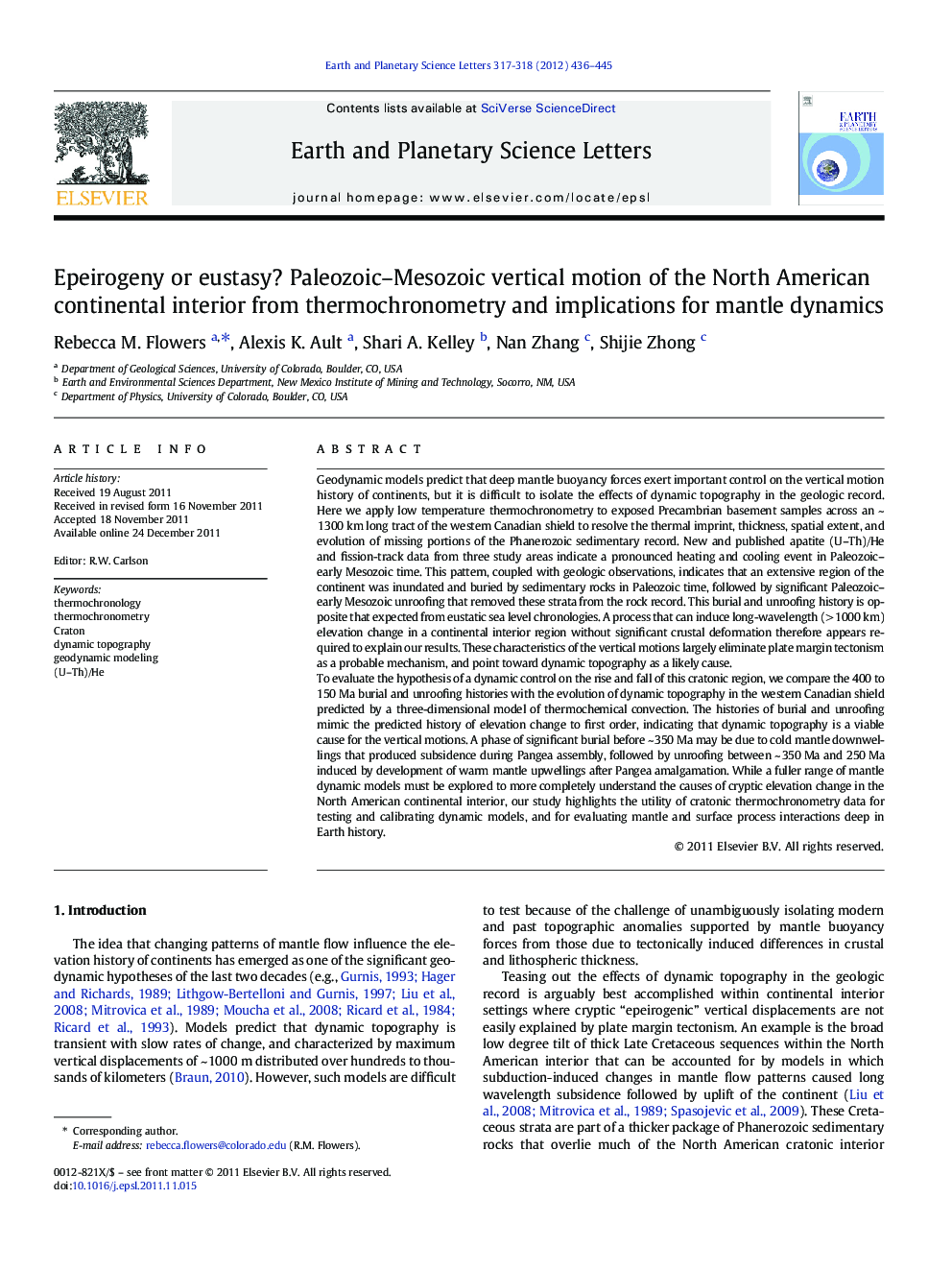| کد مقاله | کد نشریه | سال انتشار | مقاله انگلیسی | نسخه تمام متن |
|---|---|---|---|---|
| 4677659 | 1634812 | 2012 | 10 صفحه PDF | دانلود رایگان |

Geodynamic models predict that deep mantle buoyancy forces exert important control on the vertical motion history of continents, but it is difficult to isolate the effects of dynamic topography in the geologic record. Here we apply low temperature thermochronometry to exposed Precambrian basement samples across an ~ 1300 km long tract of the western Canadian shield to resolve the thermal imprint, thickness, spatial extent, and evolution of missing portions of the Phanerozoic sedimentary record. New and published apatite (U–Th)/He and fission-track data from three study areas indicate a pronounced heating and cooling event in Paleozoic–early Mesozoic time. This pattern, coupled with geologic observations, indicates that an extensive region of the continent was inundated and buried by sedimentary rocks in Paleozoic time, followed by significant Paleozoic–early Mesozoic unroofing that removed these strata from the rock record. This burial and unroofing history is opposite that expected from eustatic sea level chronologies. A process that can induce long-wavelength (> 1000 km) elevation change in a continental interior region without significant crustal deformation therefore appears required to explain our results. These characteristics of the vertical motions largely eliminate plate margin tectonism as a probable mechanism, and point toward dynamic topography as a likely cause.To evaluate the hypothesis of a dynamic control on the rise and fall of this cratonic region, we compare the 400 to 150 Ma burial and unroofing histories with the evolution of dynamic topography in the western Canadian shield predicted by a three-dimensional model of thermochemical convection. The histories of burial and unroofing mimic the predicted history of elevation change to first order, indicating that dynamic topography is a viable cause for the vertical motions. A phase of significant burial before ~ 350 Ma may be due to cold mantle downwellings that produced subsidence during Pangea assembly, followed by unroofing between ~ 350 Ma and 250 Ma induced by development of warm mantle upwellings after Pangea amalgamation. While a fuller range of mantle dynamic models must be explored to more completely understand the causes of cryptic elevation change in the North American continental interior, our study highlights the utility of cratonic thermochronometry data for testing and calibrating dynamic models, and for evaluating mantle and surface process interactions deep in Earth history.
► Thermochronometry data are used to infer Canadian shield burial and unroofing.
► A vast region was buried in the Paleozoic where such rocks are not preserved.
► History is opposite that expected from eustatic sea level; requires elevation change.
► History mimics dynamic topography change predicted by a mantle dynamic model.
► Future cratonic thermochronometry data can further test and calibrate dynamic models.
Journal: Earth and Planetary Science Letters - Volumes 317–318, 1 February 2012, Pages 436–445